If your basement is leaking or you have standing water in your lawn, you need a drainage and waterproofing system that works.
Like many homeowners whose basements leak in heavy rains, you may shudder at the thought of thunderstorms. After all, basement leaks can threaten the structural integrity of your home. That’s why finding a solution that works is so crucial.
This guide will answer the following questions:
If you have standing water in your basement and yard during or after a storm, that’s an obvious sign of a drainage problem. However there are several signs of yard drainage problems that some homeowners may not know to look for.
While you should always be on the lookout for puddles and water stains in your basement, keep an eye open for these other signs of water in your basement after rain that may mean you need professional assistance.
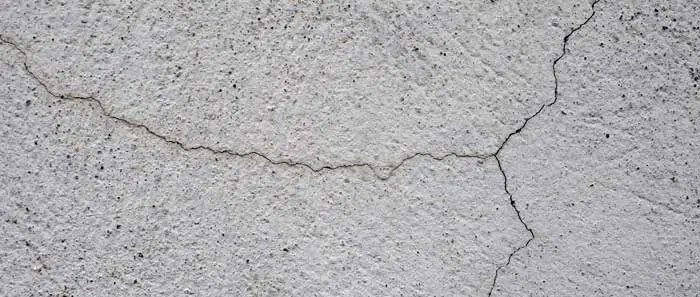
Cracks in your foundation can be a sign of several other problems. Larger cracks, especially when combined with other issues, can indicate that a major drainage problem is causing true structural damage.
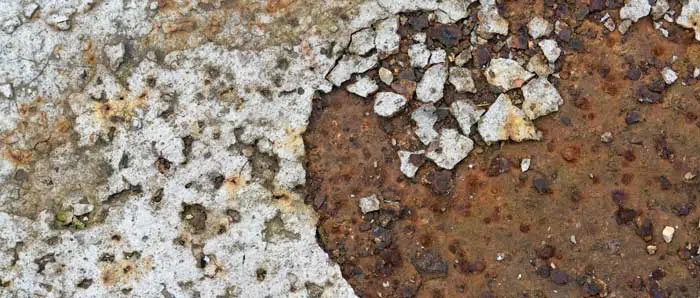
Water stains on your foundation walls are hard to miss, but those stains aren’t the only wall issues you’ll have to contend with if you have water leaks. You may notice a white or grey flaky crust on those walls. These flakes are caused by mineral deposits that water leaves behind as it evaporates, also known as efflorescence.
While the efflorescence itself won’t cause issues and can likely be scraped off, it usually indicates issues yard drainage problems. Larger spots of flaking, known as spalling, can be a sign that your entire foundation is threatened by water drainage issues.
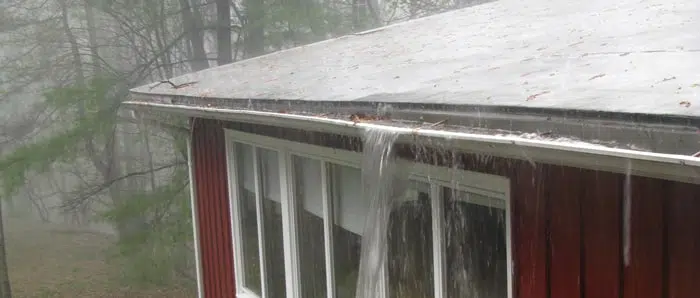
Head outside the next time it rains. If you notice your gutters are overflowing with water or your downspouts are pouring water right next to your house, that can cause water to fall right next to your foundation and seep into your basement. While gutters and downspouts may not seem pertinent to drainage issues in your yard, they’re often the biggest offenders.
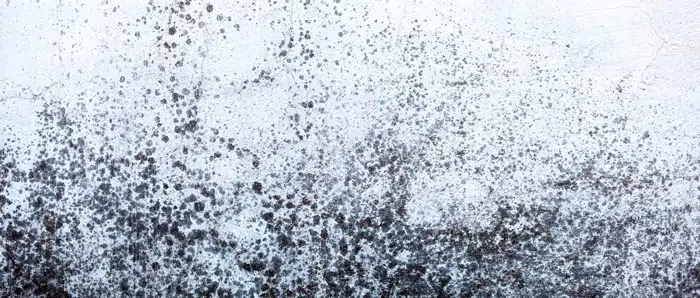
Mold and mildew in your basement are common signs of yard drainage issues. If you don’t see any but suspect water damage thanks to issues with your gutters or downspouts, head up to your attic. If you find mildew on your attic roof, that can be a sign that moisture from your basement has migrated through the home up to your roof. Not only will you need to fix the drainage issues down below, you may also need to re-shingle your roof as well.
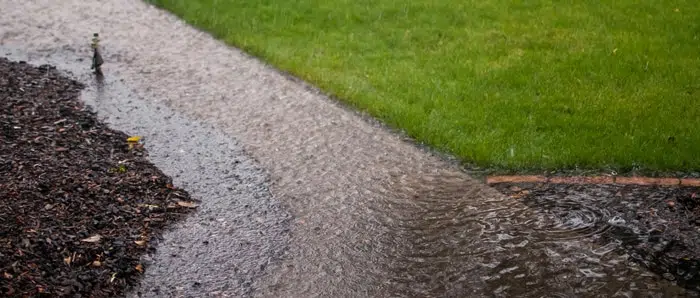
While you’re outside, have a look at your lawn and your dirt beds. Puddling of water in strange places, “rivers” of water near your home, or other types of soil erosion are signs your yard is not draining properly. If this goes on too long, that water, which will have nowhere else to go, may migrate down into your basement, causing a number of major foundation issues.
Q: What can I do to prevent recurring pooling against my foundation? From Andrew in Charleston, IL
A: If you’re having standing water or puddling up against your home’s foundation, that really needs to be addressed quickly because that can lead to serious foundation problems in a really short amount of time.
Most of the time, homeowners can correct these problems themself by adding some additional dirt to get the water away from the house, and also looking at your gutters and your downspouts to make sure they’re running at least 10 feet away from the house.
These simple solutions are also something that Helitech would be happy to look at for a customer and take care of it for them.
If you believe you’re seeing signs of foundation problems, there are several repair options to explore. A free inspection from a foundation expert, such as Helitech, can uncover specific problems and find the right solutions to meet your home’s unique repair needs.
Drainage problems can cause a whole host of issues that can get worse over time. If these issues go on too long, some can affect your entire lot and even the structural integrity of your home.
While plants certainly need water, too much of it does more harm than good. Serious yard drainage issues can result in standing water that will drown your garden and make proper lawn maintenance nearly impossible.
Even more serious are potential foundation problems and true structural damage, which can threaten the integrity of your entire house should the problem go unchecked for too long. Concrete, the most common material used for foundations, is porous. While this has its benefits such as energy efficiency and durability, it can also retain stormwater, leading to leaks in your basement.
Your basement isn’t the only place that water can wreak havoc, though. As water enters the structure of your home, it can also cause issues in crawl spaces, wooden floor joists, walls, and ceilings. This water can accumulate, leading to mold, mildew, and a haven for water-loving pests.
While you likely already want to remedy (and prevent) yard drainage issues, it’s important to first understand the causes of these issues. Some causes require specialized solutions—all of which Helitech has decades of experience implementing.
If you’re wondering why your basement is leaking, we can diagnose the cause—and then fix it.
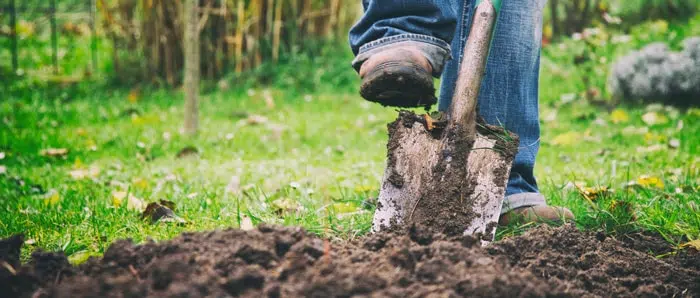
Don’t blame the dirt: This issue is nearly always caused by water saturation. As water sinks into the soil, this puts pressure (known as hydrostatic pressure) on your foundation walls and floors, leading to basement flooding.
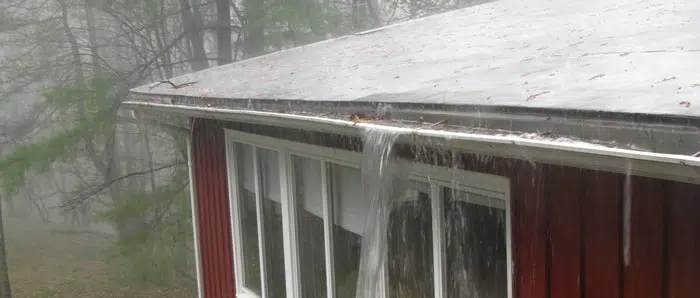
It’s not just rain that can saturate your soil. Clogged gutters and poorly placed downspouts can increase the amount of water falling right next to your foundation, creating lateral pressure on the walls, resulting in leaks and sometimes foundation damage.

When window wells aren’t installed correctly or have gaps after settling, this creates tiny spaces that are ideal for water seepage. During heavy rains, you may see leaks coming from the windows; if you see stains on the walls after a rain, that’s likely from your leaky window wells.
Leaks are common in several places in leaky basements. Be sure to look at…
Helitech has over three decades of experience in waterproofing and foundation repair solutions across the Midwest. Whether we use industry-standard solutions or we implement our proprietary solutions, you can rest easy knowing that our yard drainage solutions will solve all of your water drainage issues.
Our three-step system ends current drainage issues and prevent future ones from occurring. We focus on Capturing, Redirecting, and Draining the water. Here’s what that means.
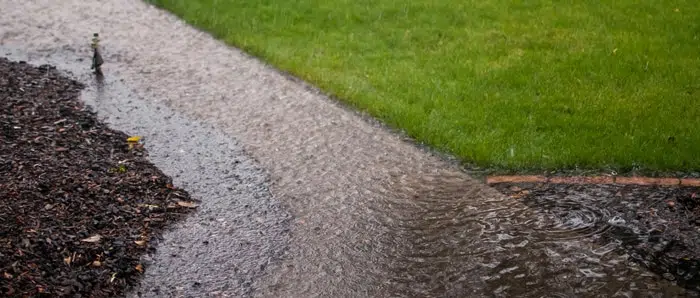
If you have excess water in your yard, near your foundation, or, worse, actually in your basement, our first step will be to get that water out. We’ll also need to create a system to prevent water gathering in these places again, effectively eliminating your poor drainage issues.
We accomplish this through the use of well-designed downspouts and gutters to collect the water and guide it away from your home. Strong gutters will ensure that the water does not roll off the roof and down the side of your house, while expertly placed downspouts prevent water from draining too close to any structures.

Capturing the water isn’t enough: We need to make sure it actually moves away from your home to an area that won’t cause further issues.
Landscaping is one easy change to make. Depending on the type of soil you have and the grade, elevation, and positioning of your lot, you can often make some major changes with some minor landscaping changes, such as adding in wet-soil-tolerant flowers to create a rain garden and using heavier mulch, which will soak up more water with the added benefit of not floating away should your yard experience flooding. This is an easy way to solve standing surface water on your lawn. If your lot is on a hill, you can install a retaining wall with drain tile to shore up the yard and reduce soil erosion.
However, for bigger jobs, we’ll need to create drainage paths around the perimeter of your home.
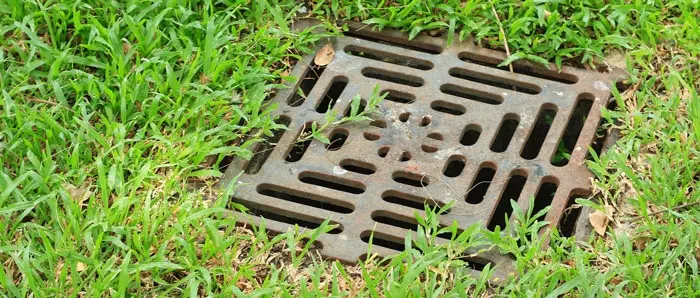
Draining the water is the ultimate answer to your yard drainage problems. Even if you capture and redirect the water, that water ultimately needs to end up somewhere.
There is more than one drainage solution for yard drainage issues on the market. A French drain is a very common fix for these problems.

We’re often asked what exactly a French drain is. Another common name for French drains is drain tile, which is a bit of a misnomer: these days, it’s actually made of plastic piping. As you likely know, water flows downhill, thanks to gravity. French drain systems take advantage of this.
A French drain, or drain tile, employs a trench filled with gravel or rock and a perforated pipe. This trench reroutes water away from your foundation.
This drain pipe is installed underground around the perimeter of your home. Then, the water is directed away from your home either via gravity, like a French drain, or into a sump pit via a sump pump.
You can install shallow and deep trench drains depending on your drainage issues. Installing a French drain can be fairly difficult to install. They are also known to clog or backflow and often require a sump pump, which adds to an already costly process. However, we recommend the Helitech Hydraway drainage system.
Our Hydraway Drainage System has been shown to remove 70% more water than traditional French drains.
Our Hydraway system is made up of three key parts: the HydraDry Drain Channel, bridging material, and the Super S3 Sump Pump.
We install the HydraDry underneath your basement floor to catch water before it even enters your home. The filter fabric used is designed to take on much more water, while also being resistant to clogs, thank to the polypropylene filtration system. Removing water while avoiding clogs reduces the hydrostatic pressure that often causes leaky basements.
The HydraDry bridging material goes on top of the drain channel, right next to your foundation wall where the footing, wall, and floor meet. This component directs water toward the HydraDry, helping to further reduce hydrostatic pressure.
Finally, the Super S3 Sump Pump uses a series of pipes to trap all of the water removed from around your basement and foundation by moving it to a sump pit. Inside this sump pit will be a sump pump, which moves the water through drain pipes to the outside of your home.
Wondering how well this could possibly work? Keep in mind that we’ve installed this system worldwide and have zero known failures. The HydraDry system is a long-term waterproofing solution that works.
You’ve heard it time and time again: Prevention is key. Yard drainage issues are something you want to eliminate before they even exist. While our Hydraway system will take care of the big issues, there are other steps we take to keep your house truly waterproof—not just water-resistant.

Our exterior waterproofing solutions are the ideal choice for preventing leaks before they start. Our yard drainage systems will not only prevent water from making its way toward your foundation but will also eliminate standing water in your yard during heavy storms.
Combining strategically placed drain tile and our specialized Hydraway yard drainage solution will make sure that on the list of issues around the house, poor drainage won’t be one of them.
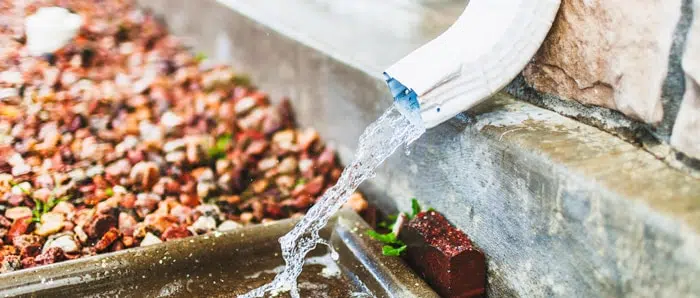
One of the easiest ways to prevent drainage issues is by extending your downspout drains. Almost every home’s downspouts are too short—yes, even yours! Downspouts should extend at least 10 to 15 feet away from your home to ensure that water is being properly redirected away from your foundation. We perform downspout and gutter health checks and install downspout extensions on a regular basis.